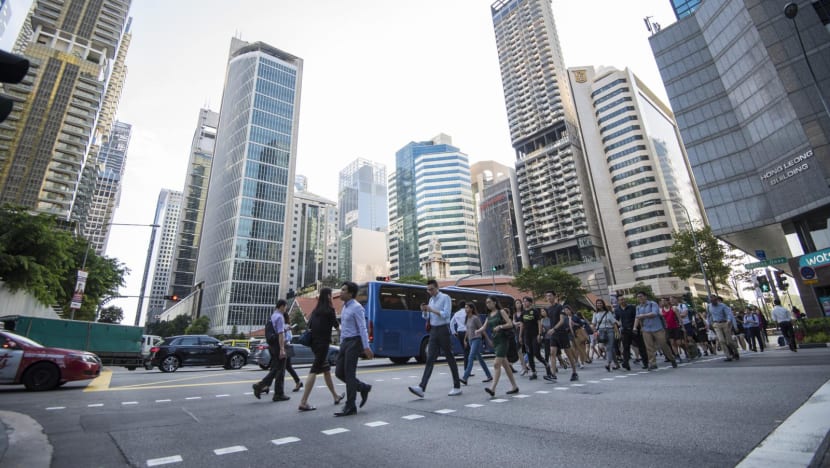Election 2025: How Singapore's Political Parties Plan to Shape Your Financial Future
As Singapore approaches its watershed 2025 General Election, the financial stakes have never been higher for citizens across all income brackets. Behind the political rhetoric and campaign rallies lies a crucial question for the financially savvy Singaporean: how will each party's economic policies affect your wallet, investments, retirement plans, and overall financial well-being?
With polling day confirmed for May 3rd, we examine the financial proposals in party manifestos that could significantly impact your personal economic journey in the years ahead.
The Economic Backdrop: Singapore at a Crossroads
Singapore enters Election 2025 at a delicate economic juncture. The post-pandemic recovery has been uneven, with GDP growth moderating to 2.1%. Meanwhile, inflation remains stubbornly above historical averages at 3.2%, and structural pressures like an aging population and technological disruption continue to transform the employment landscape.
Against this backdrop, let's examine how the major political parties are positioning themselves on key financial issues.

Retirement Planning: The Pension Politics Shaping Your Golden Years
People's Action Party (PAP)
The incumbent PAP has centered its retirement proposal around enhancements to the existing CPF system, with Prime Minister Lawrence Wong recently outlining a "CPF 2.0" framework that promises to:
- Increase the CPF Special Account interest rate to 5.0% (up from the current 4%) for the first $60,000
- Raise the Enhanced Retirement Sum (ERS) withdrawal age to 65.5 in 2026, with gradual increases to 67 by 2030
- Expand matched CPF top-ups for lower-income workers aged 55-65
Workers' Party (WP)
The Workers' Party manifesto takes a different approach, proposing a "Retirement Income Scheme" that would supplement CPF with universal payouts. Key features include:
- A universal S$350 monthly payout for all Singaporeans aged 65 and above, regardless of income level
- Lowering the CPF Minimum Sum requirement by 20%
- Allowing full withdrawal of CPF savings at 65, with voluntary deferral options
- Creating a dedicated Unemployment Insurance Fund
Progress Singapore Party (PSP)
PSP has positioned itself with perhaps the most radical CPF reforms, including:
- Reducing the CPF Minimum Sum by 25%
- Allowing withdrawal of excess CPF savings above the Minimum Sum at age 55
- Creating a new "Retirement Bridge Program" providing supplementary income of S$500 monthly for seniors with inadequate CPF savings
- Implementing a limited form of pension for citizens with at least 20 years of CPF contributions
Financial Impact Analysis
For the average Singaporean saving for retirement, these competing visions present significantly different outcomes. Based on our analysis of a 45-year-old PMET earning S$8,000 monthly:
- Under the PAP's proposal, they would accumulate approximately 8-10% more in retirement savings by age 65 due to higher interest rates, but with reduced flexibility on withdrawals
- The WP's plan would provide greater flexibility and guaranteed supplementary income, but potentially lower total savings if individuals opt for earlier withdrawals
- PSP's approach offers the most immediate liquidity but could reduce long-term retirement adequacy for those who withdraw significantly at 55

Income and Employment: The Battle for Higher Wages
PAP's Productivity-First Approach
The PAP continues to emphasise productivity-driven wage growth, with their manifesto proposing:
- Expanding Progressive Wage Models to cover 80% of lower-wage workers by 2028
- New tax incentives for companies that increase median wages by more than 5% annually
- Enhancing the Workfare Income Supplement with higher payouts for workers aged 35-55
- Extending the Jobs Growth Incentive for companies hiring local workers aged 40+
WP's Minimum Wage Push
The Workers' Party has made a national minimum wage its cornerstone employment policy, proposing:
- An initial minimum wage of S$1,500 per month, to be gradually increased to S$1,750 within four years
- Expanded redundancy insurance covering up to 6 months of income at 60% replacement rate
- Stricter enforcement of anti-discrimination hiring practices
- Capping foreign worker quotas in selected industries to prioritise local employment
PSP's "Singaporeans First" Employment Strategy
PSP has emphasised local workforce prioritisation, with proposals including:
- Increasing the foreign worker levy significantly for S-Pass holders
- Creating industry-specific minimum wage bands ranging from S$1,400 to S$2,000
- Implementing a "Local Hiring Credit" of up to S$1,000 per month for companies hiring Singaporeans over 50
- Reducing GST on essential services to increase disposable income
Financial Impact Analysis
For working Singaporeans, these policies could have substantial implications:
- Lower-wage workers would see the most significant differences, with potential wage increases of 10-15% under the WP and PSP proposals compared to more modest gains under the PAP's progressive wage approach
- Mid-career PMETs might benefit most from PSP's local hiring incentives, which could create approximately 25,000 jobs for Singaporeans over 50, according to their estimates
- The PAP's productivity-focused approach might deliver more sustainable long-term wage growth, but with fewer immediate gains for lower-income workers
Housing Affordability: Political Solutions to Singapore's Property Pressure
With housing affordability remaining a top concern for Singaporean voters, all parties have presented ambitious proposals to address HDB prices and private property accessibility.
PAP's Supply-Side Focus
The PAP has emphasised increasing housing supply while maintaining current cooling measures:
- Building 150,000 new HDB flats between 2025-2029, with 40% designated as "starter homes" with stricter resale conditions
- New "HDB Prime Start" program offering enhanced grants up to S$120,000 for first-time buyers
- Implementing a Seniors' Lease Buyback+ scheme with enhanced terms for older homeowners
- Maintaining current property cooling measures with potential for "calibrated adjustments"
WP's Affordability Reforms
The Workers' Party has proposed more significant interventions in the housing market:
- Delinking new HDB prices from market values, with pricing based on construction costs plus land at historical values
- Implementing a universal HDB loan option with fixed 2.3% interest rate regardless of market conditions
- Extending the Minimum Occupation Period to 10 years for new flats in prime locations
- Creating dedicated "Young Family Priority" balloting for couples with children
PSP's Market Intervention Approach
PSP has outlined perhaps the most interventionist housing policies:
- Capping BTO price increases at 5% per year regardless of market conditions
- Implementing a "Citizen's Housing Priority" system giving citizens exclusive ballot access for 75% of new BTO flats
- Reducing the income ceiling for Executive Condominiums to focus on middle-income households
- Increasing Additional Buyer's Stamp Duty to 35% for foreign buyers (up from current 30%)
Financial Impact Analysis
For prospective homebuyers and current homeowners, the different approaches would have significant implications:
- Under the PAP's plan, first-time buyers would see enhanced grants but BTO prices would likely continue rising in line with market values, albeit at a controlled pace
- The WP approach could reduce new flat prices by an estimated 15-20% through delinking from market values, but might reduce the asset appreciation potential
- PSP's price cap approach would likely make new flats more affordable in the short term but could create supply constraints if private developers reduce land bid prices in response
Small Business Support: Competing Visions for Entrepreneurial Singapore
With SMEs employing nearly 70% of Singapore's workforce, business policies are effectively employment policies. Each party has outlined distinctive approaches to supporting local enterprises.
PAP's Evolution of Enterprise Support
The PAP has proposed expanding existing schemes while creating new digital economy initiatives:
- Doubling the Enterprise Development Grant funding to S$1 billion annually
- Creating a new "Digital Enterprise 2030" program with up to S$200,000 in matching grants for SME digitalisation
- Establishing a S$5 billion "Future Economy Fund" providing patient capital for innovative local enterprises
- Enhancing the Productivity Solutions Grant with higher support levels for approved solutions
WP's Local Business Protection Approach
The Workers' Party has focused on reducing costs and providing more direct support:
- Creating a dedicated SME rental control framework for government-owned commercial properties
- Implementing a "Local First" procurement policy for government contracts under S$1 million
- Establishing an "Enterprise Stabilisation Fund" providing low-interest loans during economic downturns
- Reducing foreign worker levies for SMEs that maintain at least 70% local workforce
PSP's Nationalist Business Approach
PSP has outlined the most protective stance toward local businesses:
- Implementing a 10% bidding advantage for local SMEs in government procurement
- Creating a "National Supply Chain Resilience" program with incentives for using local suppliers
- Reducing corporate tax to 12% for SMEs with annual revenue below S$10 million
- Establishing a "Heritage Enterprise" grant providing up to S$250,000 for traditional businesses undergoing modernisation
Financial Impact Analysis
For Singapore's entrepreneurs and business owners, the competing visions offer different advantages:
- The PAP's approach maintains the pro-business environment while emphasising transformation, potentially benefiting forward-looking SMEs but with high expectations for adaptation
- WP's cost-control measures could improve short-term profitability, particularly for local businesses in competitive sectors or those with high rental costs
- PSP's protectionist approach might provide the most immediate relief to tradition-bound local businesses but could reduce competitive pressures for innovation

Taxes and Cost of Living: The Pocketbook Battle
Perhaps no election issue more directly impacts Singaporeans' daily finances than taxation and cost of living policies. Each party has staked out distinctive positions that would reshape household budgets.
PAP's "Targeted Support" Approach
The PAP has proposed maintaining current tax rates while enhancing support for vulnerable groups:
- Maintaining GST at 9% but expanding the Assurance Package for another three years
- Introducing a new "Family Support Credit" of up to S$1,500 annually for households with monthly income below S$6,000
- Enhancing income tax reliefs for caregivers of elderly parents and children
- Implementing utility rebates of up to S$900 annually for eligible households
WP's Tax Restructuring Vision
The Workers' Party has proposed more significant tax reforms:
- Reducing GST on essential items to 3% while maintaining 9% on other goods and services
- Implementing a wealth tax of 0.5% on net assets above S$10 million
- Increasing personal income tax rates by 2% for those earning above S$500,000 annually
- Expanding ComCare support with higher income eligibility thresholds
PSP's Consumer Relief Focus
PSP has emphasised immediate cost-of-living relief:
- Reducing GST to 7% for all goods and services
- Implementing price controls on essential food items and public transport
- Creating a "Utility Relief Fund" reducing bills by 30% for households with income below S$6,500
- Capping healthcare cost increases at the inflation rate
Financial Impact Analysis
For Singaporean households, these competing tax and cost-of-living policies would have widely varying effects:
- Under the PAP's approach, lower-income households would receive targeted assistance, but middle-income families would see limited additional support
- The WP's differentiated GST approach could save the average household approximately S$720 annually on essential purchases, but high-net-worth individuals would face new wealth taxes
- PSP's across-the-board GST reduction would provide immediate relief to all consumers but raises questions about long-term revenue adequacy
Making Your Financial Choice at the Ballot Box
As Singapore approaches Election 2025, voters face meaningfully different visions for the nation's economic future.
What's clear is that Election 2025 presents Singapore with distinct economic paths forward. As a voter, understanding these differences is essential to making an informed choice that aligns with both your personal financial interests and your vision for Singapore's economic future.
Let us know what you think about this topic, and what do you want to hear next.
Disclaimer: Your financial journey is unique, and while we aim to make complex topics digestible, we strongly encourage you to consult licensed professionals (financial advisors, accountants, legal experts, etc.) before making decisions that impact your wealth, career, or lifestyle. The Financial Coconut, its creators, and contributors are not liable for any actions taken based on our content. Remember: We’re here to spark curiosity and share knowledge, but you own the choices you make. When in doubt, seek a pro!
You can now be our community contributor and make a pitch to have your favourite personality be on our show.
Join our community group and drop us your insights on this topic.

-3.png?width=50&name=Square%20(2)-3.png)









Let us know what you think of this post